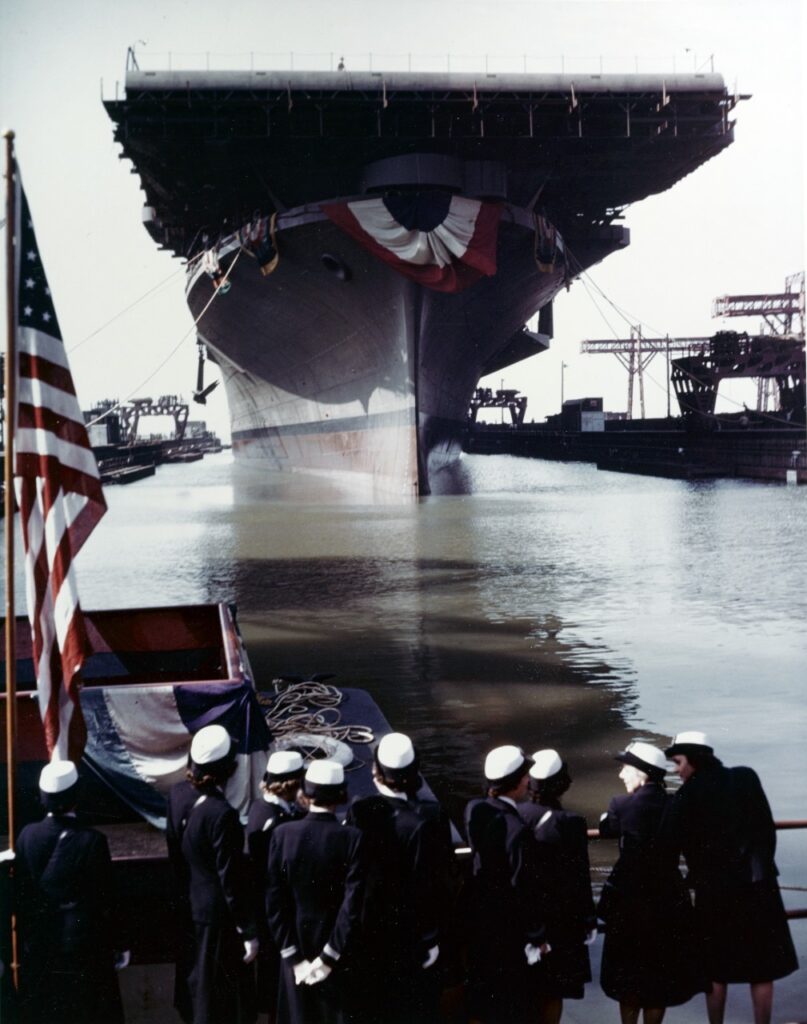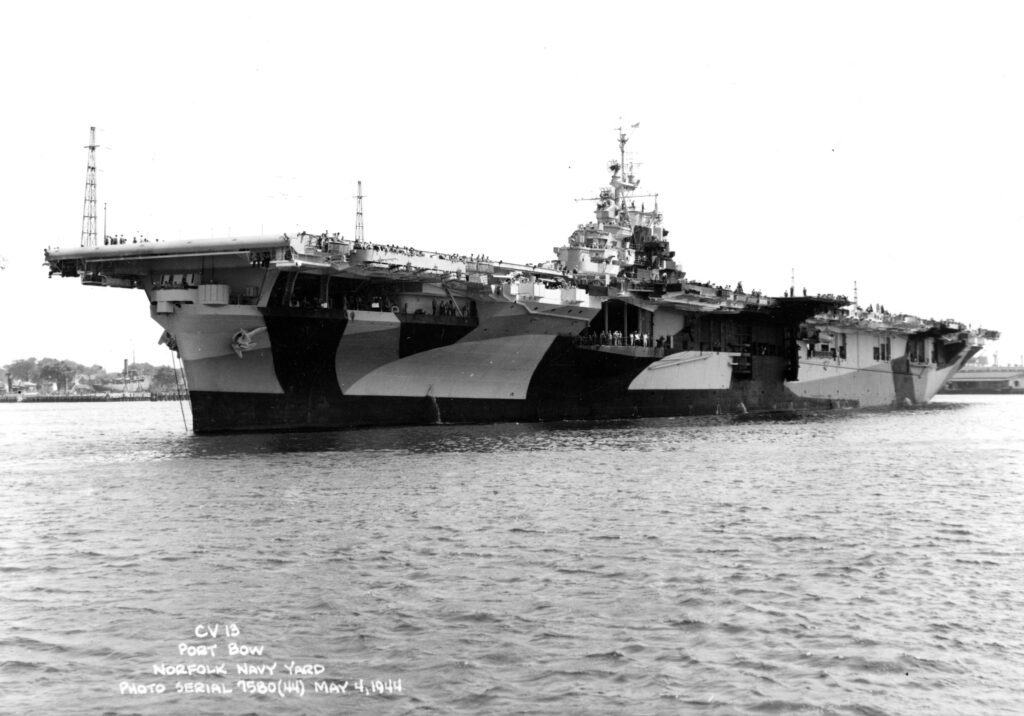How USS Franklin Got Its Name

People argue about anything—consequential or inconsequential—on the Internet. (I hear someone arguing that point right now.)
I commented once on a friend’s post about her pasta and I mentioned I liked to use my pasta pot. You know, the pots that have locking lids with holes in them you can drain the water out of the pasta without using a colander. A total stranger chimed in saying how dangerous pasta pots are. We’d been cooking with it for a while and enjoyed its convenience and never found it to be unsafe. When I disagreed, she came right back at me. Younger me, not as experienced as I am now, argued with her. Finally, I walked away. But just for the record, WE’VE BEEN USING THAT POT FOR YEARS WITH NO ACCIDENTS, LADY!!!!!!
How Did Franklin Get Her Name?
As I research my book, especially in social media comments, I find people arguing about how USS Franklin (CV-13) got its name.
“It’s named after Ben Franklin!â€
“It’s named after the Battle of Franklin (a lesser-known battle at Franklin, TN during the Civil War)!â€
“No, the ship was named after earlier ships named the Franklin!â€
Then the comments, quickly turning snide, fly faster than an F4U Corsair being catapulted off the carrier.
Even those historians and journalists who write about Franklin disagree. In my research, I have read five different books that mention how she was named. Â Three of the authors state that CV-13 was named Franklin to honor the heritage of the four ships that formerly bore that name.
One author inferred that she was named after the Battle of Franklin and another states it unequivocally. I have also surfed the ‘net and found four different websites, including the Smithsonian and the National War II Museum in New Orleans that say she was named to honor her predecessors.
Then there’s another historian that works at a World War II museum that says she was named after Benjamin Franklin.
So, which is it? Was she named after Benjamin Franklin, the Battle of Franklin, or to honor her predecessors?

Shipyard Photo: US Navy
Blame it on the Washington Naval Treaty of 1923
In 2012 the Department of the Navy issued “A Report On Policies and Practices of the U.S. Navy for Naming the Vessels of the Navy.†That report states that in 1923 President Warren Harding’s Secretary of the Navy, Edwin Denby, shifted the naming convention of battle cruisers to the new construction of aircraft carriers. Battle cruisers would no longer be built under the terms of the Treaty. According to the report:
USS Langley, Navy’s very first carrier, was a converted collier named by Secretary of the Navy Josephus Daniels for Professor Samuel P. Langley, an American astronomer and physicist who conducted experiments on the problem of mechanical powered flight. However, when the 1923 signing of the Washington Naval Treaty compelled the Department of the Navy to stop building battle cruisers, Secretary of the Navy Edwin Denby decided to shift their type naming convention, “historic Naval Vessels or battles,†over to new construction aircraft carriers (CVs). Consequently, the practice of naming carriers for people lasted for only one ship. All fleet carriers built after USS Langley and before the Second World War—Lexington, Saratoga, Ranger, Yorktown, Enterprise, Wasp, and Hornet—were bestowed names in accordance with this newly established convention. Once the war started, the carrier naming convention only slightly changed to read “famous old ships and important battles of our history and present world warâ€â€”an acknowledgment of the titanic struggle the Navy waged.
Franklin’s Name Results From US Navy Tradition
I know, you’re thinking, “that’s not much to go on. It says “historic Naval Vessels OR battles!†Why couldn’t she be named after the battle? Of the thirteen Essex-class carriers ordered before the end of 1941, twelve received names that had been held by ships in the US Navy. Bunker Hill (CV-17) was the first ship in the US Navy to carry that name and she was named after a battle. Others, such as USS Bennington (CV-20), Yorktown (CV-10), Lexington (CV-16), and Franklin were named after ships that had carried their names in the past. And yes, the first ships in their lineages were named after battles or in the case of Franklin, Hancock (CV-19), and Randolph (CV-15) named after famous Americans. This is the US Navy here; they were honoring  US Navy tradition first and battles or famous personages second.
Also note that three early carriers, Ranger (CV-4), Wasp (CV-7), and Hornet (CV-8) were named, not after battles, but after ships who had previously held those names.
Do you still believe Franklin was named after a battle? Where an “ancestor ship†of the Essex-class carrier was named after a battle, notice that it was almost always a Revolutionary War battle. Only one ship received the name of a Civil War battle. Antietam was a famous Civil War battle, because it was the bloodiest one-day battle of the war. CV-36 was named Antietam, but it was the second ship to carry that name. The Battle of Franklin was not a major battle. Also, USS Franklin (CV-13) was in the first group of ships to be named before they needed to use battles as names and therefore was named because it was the fifth to carry that name. Antietam was one of the last to be commissioned and by that time they were short on names.
But remember, you’re reading this on the Internet where things get blown out of proportion all of the time. It’s quite possible they spent less time naming the Franklin than we think.  Here is how I think this could have gone down.
Our scene opens in 1940
The country is ramping up for war and the Navy Department has no time to waste on nonproductive debates. Someone, a captain or commander, is tasked with coming up with the names of carriers and other ships and knows he must follow the naming convention laid down in 1923. He creates a list and brings it to his boss, an admiral who will present the list to the Secretary of Navy. The officer got to where he was by being smart and and having the ability to get things done. Our unknown officer has other things to do and not a lot of time to do them. He knows his history, believes in US Navy tradition, and creates a list of potential names.
As he hands the list to the admiral he says,
“These all follow the naming convention honoring historic ships.”
Both are familiar enough with Navy tradition to know that many of the earliest ships in each of the lineages were named after battles. The admiral looks over the list, nods his head in affirmation, and takes the list to the Secretary of the Navy. Regulations are followed, time is saved, and now on to the next task. They have a war to prepare for!
Franklin’s name honored her predecessors. But her earliest predecessor was named after Benjamin Franklin. Therefore she was directly named after other ships that bore her name and indirectly named after the famous statesman.
Feel free to chime in with your thoughts.